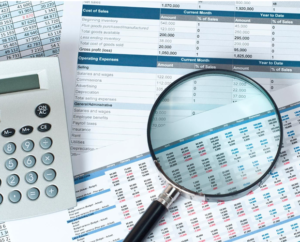As the name implies, an income statement (sometimes called a Profit and Loss Statement) shows the revenue your company earned, and the costs associated with running your company. Although an income statement can be prepared for any interval, it is usually prepared annually. For example, an income statement that includes financial data for 2013 would be entitled, “Income Statement for the Year Ended December 31, 2013.”
Your income statement provides some of the data you will need to calculate the basic financial ratios that can help you track the performance of your company, identify trends, and implement strategies to improve your finances. With income statement data, you can evaluate factors such as your profitability and ability to manage your expenses.
Here are six ways you can use your income statement to improve profitability:
- Examine the relationship between items in the income statement and total revenue: For instance, check the Cost of Goods Sold as a percentage of your total revenue. If this is high, perhaps your materials are too expensive, or your productivity is too low
- Compare ratios with a similar company or industry averages to determine your capacity
- Check your gross profit margin. If this is too low, it may indicate inadequate sales, high materials or inventory cost.
- Check your operating profit margin. If this is too low, it may indicate that your operating expenses are out of control
- Check your net profit margin. If this is too low, it may indicate a high cost of investment or financing activities
- Analyze the trend of your numbers over time. Compare your results over the past three years – are they rising, falling or stagnant?
Preparing financial statements is a regulatory requirement, but accounting is much more than a tick-in-the-box exercise. When done right, it can make the business between being a market leader and an also-ran.
Do you want a helpful expert to create or analyze your financial statements? You can search for ‘’financial statement’’ consultants on our platform.




